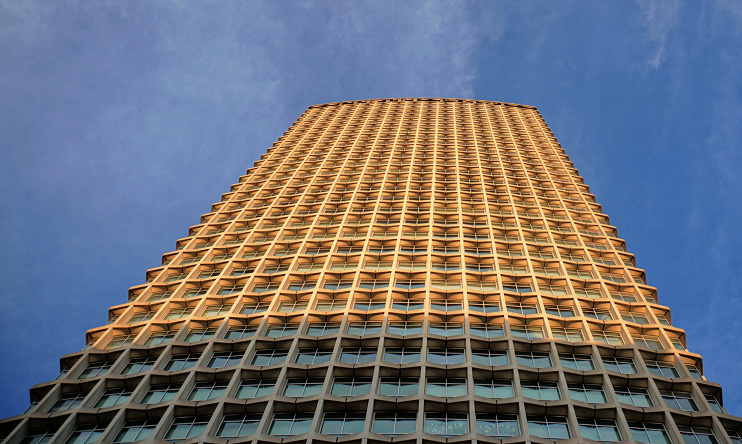Centre Point
Centre Point

Centre Point is a massive and formerly controversial 36-storey block overlooking St Giles Circus, at the northern end of Charing Cross Road, on the corner of New Oxford Street.
It was built by the property speculator Harry Hyams in 1963–7 to the designs of Richard Seifert and Partners. Because of an economic downturn much of it remained empty for several years, with Hyams content to benefit from the escalation in its capital value while he paid no rates. The structure thus gained a reputation as a monument to the evils of capitalism and a hundred squatters occupied it in 1974.
Commercial tenants were eventually found, including the Confederation of British Industry, but Centre Point never achieved its full potential as a London icon – partly because the area around the base of the tower was so badly laid out. At ground level, Centre Point became a place to avoid unless you had reason to be going inside.
Developers Almacantar acquired Centre Point for £120 million in 2011 and soon announced that “the building is in need of major repair and refurbishment to ensure that it can remain safe and open.” The company proposed to adapt the tower for residential use, arguing that Centre Point was “designed for an era of typewriters and telephones, secretariat pools and filing” and could not be cost-effectively converted to meet modern business needs because of restrictions imposed by its grade II listing.
The planned residential conversion did not include any provision for affordable homes. Almacantar later sought to deflect objections in this regard by proposing to build a block of 16 flats (ultimately 13) on the site of the former Intrepid Fox pub, which it bought in September 2012.
Camden council’s planning committee granted permission for the project in July 2013. Almacantar chief executive Mike Hussey was quoted as saying: “We intend to transform the way Londoners view and interact with Centre Point, while always staying true to its heritage. Our ambition is to ensure the scheme is re-established as a landmark destination that Londoners can be proud of.”
Almacantar quickly secured a £220 million loan from the investment company Starwood, which guaranteed that the project would be completed as planned. Centre Point now contains 82 luxury apartments, with the double-height penthouse valued at around £50 million – according to the Daily Telegraph – more than twice the figure quoted when the project was first mooted.
Taking advantage of the arrival of the Elizabeth line at Tottenham Court Road station, a south-facing public space has been created – inevitably accompanied by shops and restaurants.
An in-depth article in the Architects’ Journal [registration required] praises almost every aspect of the project (except the Centre Point Residences rebranding), including White Lion House, the adjacent social-rent housing, built for Camden Council as a condition of planning permission, and the new public space – St Giles Square. “An intelligent attempt to shift this area perceptually from isolated point block to inhabited public amenity,” is the article’s verdict.
Ironically for a building that notoriously stood unoccupied for so long, Almacantar temporarily halted formal sales of the flats in Centre Point Residences at the end of October 2018 after receiving too many “detached from reality” lowball offers. The decision left around half the units lying empty. The company started marketing properties again in June 2019.


